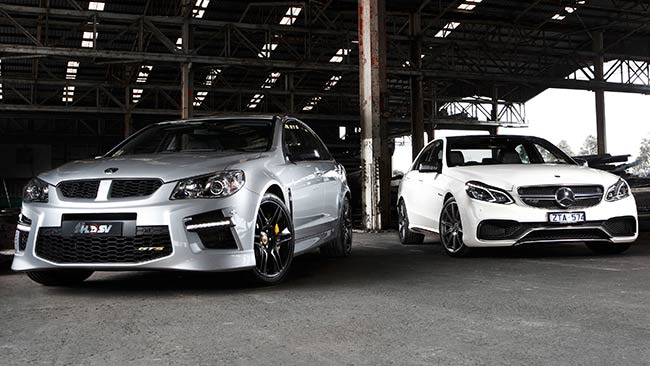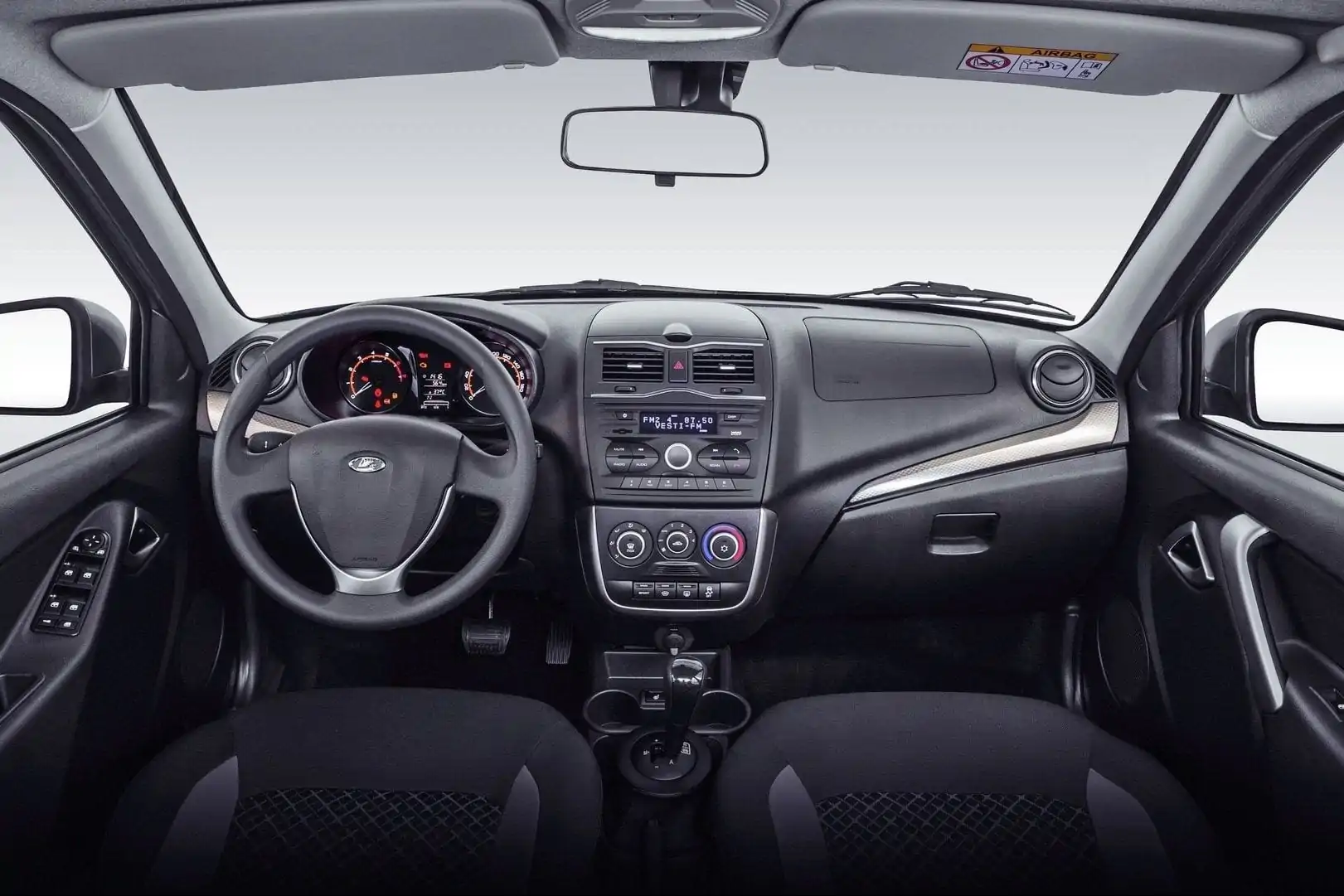
HSV GTS in the 63 Mercedes-Benz E2013
Australians love outsiders, whether on the sports field or in Hollywood. But when it comes to cars, we have little opportunity to show off our stuff. The arrival of the new HSV GTS, the fastest and most powerful production vehicle ever designed, engineered and built in Australia, is our best chance of success. And not a second before.
As previously reported, the new HSV GTS is a fitting exclamation mark for the Australian automotive industry. The 2017 Commodore is likely to be a global front-wheel drive sedan that's as Australian as the Toyota Camry.
We were blown away by the performance and sophistication of the new supercharged HSV GTS, but what we really wanted to know was how it fares on the global stage. With all due respect to the high-performance Ford Falcon GT, and last year's limited edition R-Spec in particular, the new HSV GTS has gone beyond years of Ford vs. Holden comparisons.
Both local hero cars may have supercharged V8 engines, but the hot Holden with all its tech (forward collision warning, head-up display, blind-spot warning, self-parking and cross-traffic alert when reversing) means that he really is in a different league these days. .
Traffic arbitration
Don't worry, we won't keep you busy. HSV GTS is slightly slower to the speed limit than the Mercedes-Benz E63 S-AMG. But Mercedes' 0.3 second advantage is worth $150,000 - or $50,000 for every 0.1 seconds if we use the manufacturer's claims as a benchmark. HSV says the GTS can hit 100 km/h in 4.4 seconds, Mercedes says its car in "launch mode" can reach the same result in 4.1 seconds. We never approached in any car.
We squeezed 4.7 seconds out of the manual HSV GTS and 4.5 seconds out of the automatic Mercedes-Benz. Then the difference is 75,000 0.1 dollars in 20 seconds. Both cars struggled to get out of the rut, despite identical Continental tires (19″ on the HSV and XNUMX″ on the monstrous Benz). They both used electronic magic to try and distribute their power as gently as possible, but it turns out you just can't overpower good motors. And power is really nothing without control.
By the way, we actually got the best times out of the GTS by running it on its own and not in HSV run mode (press the button, release the clutch and hope for the best; we have playable 4.8 second times if you're interested).
We believe that the automatic HSV GTS is slightly faster than the manual version, and we believe so, especially since with a manual transmission it is necessary to shift into second gear just before it eclipses the 100 mark. You feel the difference in acceleration between them? You can #@*% what. Mercedes' 5.5-litre twin-turbocharged V8 engine has much more traction at low revs, and the adrenaline rush lasts longer.
What the 0 to 100 km/h acceleration doesn't show is that the Mercedes is much more playful, more ready to pull away at any given moment from any speed you're traveling at the slightest touch of the throttle. Its acceleration in gear is significantly faster than the HSV.
The only small disappointment with the Benz is the gearbox. Mercedes' seven-speed, multi-clutch car can be a bit sluggish between gears when not on the floor (even with four shift modes to choose from). HSV is no fool, but the Mercedes-Benz E63 S-AMG will handle it in the right conditions. Power, simply put, is more accessible.
PRICE
Will a Mercedes customer ever consider a Commodore? Don't scoff until you're in your new Holden. HSV GTS looks much more prestigious. Of course, few potential buyers of any of these cars will buy them. The only downside is that inside the GTS looks exactly like the HSV Clubsport R8. In the GTS, you pay for an engine, a heavy-duty differential, a gaping front bumper, big yellow brakes, and three years of engineering work.
If you can comfortably afford a Mercedes-Benz E63 S-AMG, then you really don't need to consider anything else - from Germany or Australia. But if you just can't bring yourself to part with a quarter of a million dollars for a car that, unlike ownership, will eventually depreciate, then the HSV GTS might be for you. In the long run, it may even be of slightly more value considering it will mark the end of the Australian muscle car era.
On its own, the new HSV GTS seems expensive, but when you consider it at this company, the numbers start to add up. You can buy a manual и automatic GTS and still there is a difference from the purchase price of Mercedes-Benz.
The HSV GTS starts at $92,990 plus travel expenses. Mercedes-Benz's price has jumped from $9500 to $249,900, but it comes with a lot, including an AMG differential and power upgrades (from 410kW/720Nm to 430kW/800Nm) that come at a hefty premium elsewhere.
APPEAL
Both of these machines will easily cope with the daily routine or the race track. The HSV GTS uses suspension technology shared with Ferrari; tiny magnetic particles adjust the amount of damping in milliseconds. The result is the most comfortable HSV to date, despite the massive 20-inch wheels and tires. Pressing a button switches it from track mode to city driving.
Mercedes-Benz is just as comfortable and adjustable, but without so many gadgets. The E63's slightly lighter and lower body means it doesn't lean as much into corners as the big Commodore. Mercedes just seems lower and more agile.
However, the biggest surprise was the difference in braking performance. The HSV GTS has the biggest brakes ever fitted to an Australian-made car (390mm discs up front, clamped by six-piston calipers, just in case that part comes in handy at quiz night), and they feel absolutely superb.
The AP Racing-sourced but HSV-badged brakes have a level of precision that makes the mighty GTS feel as agile as one of those tiny, hand-built club cars with frames that seem to be made from old scrap steel tubing.
The Benz has smaller brakes (360mm discs and six-piston calipers up front), but it has slightly less weight to tighten up. However, as hard as it is to believe, especially for Europhiles, the Benz brakes seem rather basic by comparison, lacking the bite and precision of the HSV's millimeter-perfect adjustment.
VERDICT
Patriotic pride and price differences aside, the Mercedes-Benz E63 S-AMG is a knockout winner, not least because it highlights many of the strengths of the homegrown HSV GTS. It's the closest Australian car has ever come close to being the world's best sports sedan, which is all the more remarkable given the $150,000 price difference. If it was a World Cup football match, the score would be Germany 2, Australia 1. Getting into the net against a bigger team with a much bigger budget is a win in itself.
This reporter on Twitter: @JoshuaDowling

HSV GTS

Cost: $92,990 plus travel expenses
Engine: 6.2 liter supercharged V8
Power: 430 kW and 740 Nm
Transmission: Six-speed manual or six-speed torque converter automatic ($2500 option)
The weight: 1881 kg (manual), 1892.5 kg (auto)
Safety: Six airbags, five-star ANCAP rating
from 0 to 100 km / h: 4.4 seconds (claimed), 4.7 seconds (tested)
Consumption: 15.7 l / 100 km (auto), 15.3 l / 100 km (manual)
Guarantee: 3 years, 100,000 km
Service Intervals: 15,000 km or 9 months
Spare wheel: Full size (above trunk floor)
Mercedes-Benz E63 S-AMG

Cost: $249,900 plus travel expenses
Engine: Twin-turbo 5.5-liter V8
Power: 430 kW and 800 Nm
Transmission: Seven-speed automatic with multiple clutches
The weight: 1845kg
Safety: Eight airbags, five-star Euro-NCAP rating.
from 0 to 100 km / h: 4.1 seconds (claimed), 4.5 seconds (tested)
Consumption: 10l / 100km
Guarantee: 3 years without mileage limitation
Service Intervals: 20,000 km / 12 months
Spare wheel: inflation set
